SRAM's new wireless RED eTap AXS road groupset has 12 gears, approaches road gearing in a totally new way, is available in either 1x or 2x setups and features a clutch. It's set to cost £3,349 / $3,648 / €3,618 for the 2x HRD RED version we have tested over the last few months.
In the world of bike tech ‘game-changing’ is a hyperbolic phrase that gets bandied left, right and centre. Small gains in aerodynamics here or weight loss from a bike’s chassis there are often breathlessly described as game-changing, when in fact they’re merely reasonable, expected gains brought about through refinement by clever sorts. Which means it could be a complete folly for us to describe SRAM’s new eTap AXS shifting system in such terms.
Then again, might it just live up to the hype? SRAM competitor Campagnolo might well have got to 12-speed first, but with the wireless, electronic RED eTap getting a wider revamp, which goes far beyond the fabled 12th sprocket, it's taken aim at nothing less than a complete rethink of road bike gearing.
SRAM RED eTap AXS's 12th sprocket
First of all, let’s talk about that 12th sprocket. Ever bigger cassettes have been in vogue for years now, not just among committed amateurs like me and you but the pro peloton too.
The days of riders pushing huge gears with a tiny rear block are well and truly over, as ideas and beliefs over physiological efficiency change. The problem with this, however, is that the bigger range of gears in an 11-speed cassette mean bigger jumps for the chain, which puts the system under stress, with less predictable chain jumps.
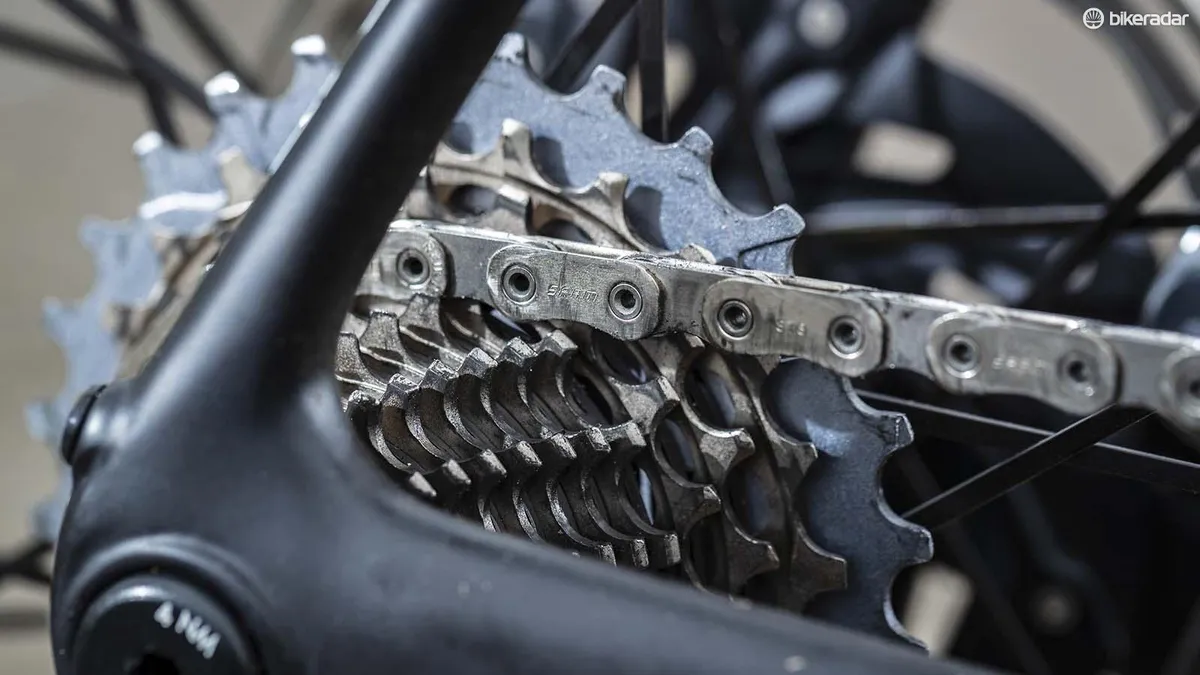
Campagnolo’s answer was to add a 12th sprocket to fill the gap in the centre of the block, which works to an extent but doesn’t entirely solve the problem. SRAM’s solution comes from its innovation in mountain biking and single ring 1x drivetrain used on road and gravel bikes in recent years.
It developed a new type of freehub body — the XD Driver — for the dirt, which introduced 12-speed gearing to its flagship Eagle groupset, and has cleared the path for use on the road too.
The XD driver had been adapted for the road, wth the XDR driver, which is ever so slightly wider than its off-road equivelant, allowing for a smaller 10-tooth sprocket, which opens up a whole new set of numbers to achieve even bigger gear ranges.
With the new 12-speed RED eTap AXS groupset, out go traditional gearing ratios and in comes something entirely new:
ArrayAs you can see, the chainring sizes are reduced and the cassettes look broadly similar, but what you actually get is harder and easier gears at both ends of the spectrum, across all combinations (Fig 1).

It’s not just the wider range where AXS seems to have an advantage on the competition, but in smoother progression between gears, with more single tooth jumps across all three cassette blocks (Fig 2).

Gear percentages, as seen in the above chart, refer to the gear range of the cassette, or the difference between highest and lowest available gears.
To work out the range of a cassette divide the largest sprocket by the smallest and multiply by 100, and looking at the range of AXS the ranges are broader than traditional gearing.
SRAM RED eTap AXS chain design

How has SRAM done it? Just as the original eTap had plenty of innovative touches, so does the new kid in town.
Adding an extra sprocket reduces space, which means the width of the chain must be reduced. Doing so without affecting its strength is a challenge, which led SRAM to rethinking its chain design.
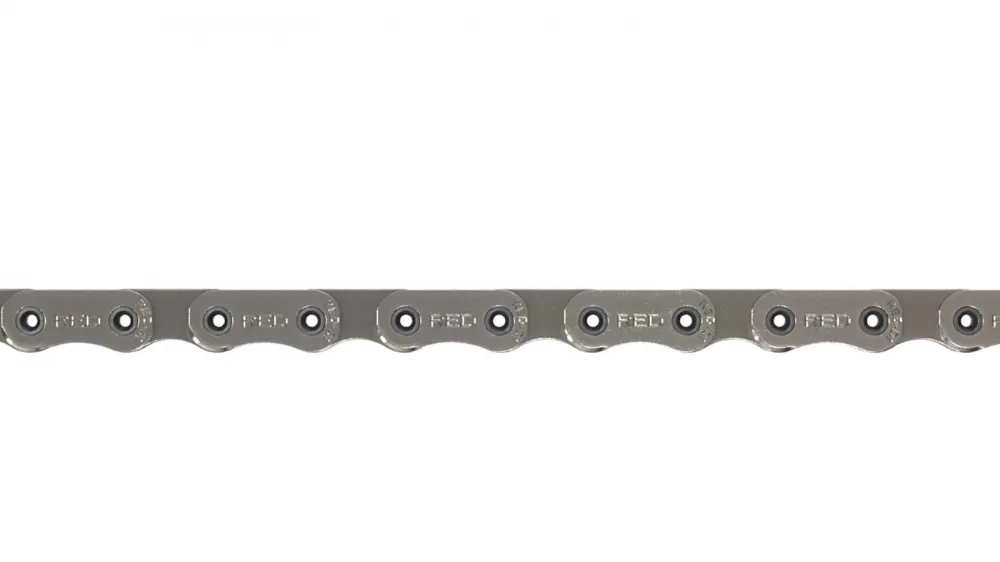
The material it’s used is both harder and stronger, and finished in what it’s calling Hard Chrome. While it looks super shiny, it’s the shape that sees the biggest change — the plates are not only thinner, but a different shape, with the chain’s links having a flat top edge.
It’s the strongest chain SRAM’s ever produced, apparently. The reduction in the chain’s size has meant that it has more clearance than the previous model when its sitting on a sprocket — i.e. the gap between the next sprocket up and next sprocket down is bigger.
More design changes
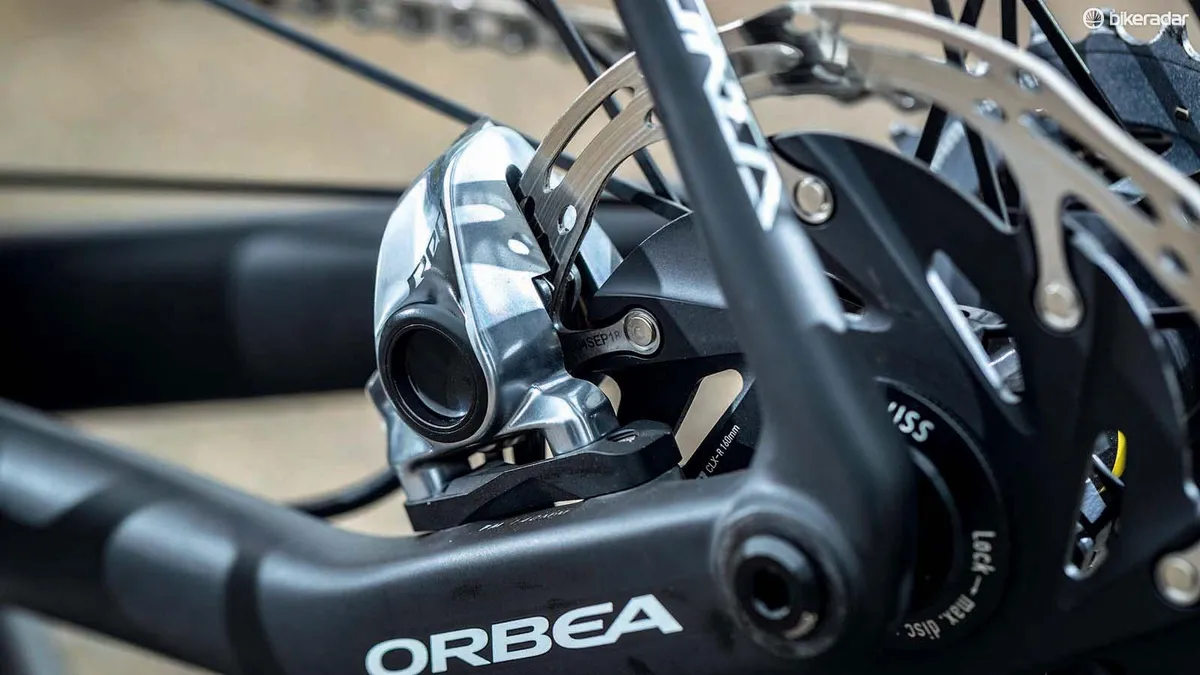
The rear mech on the AXS has also had an upgrade. It uses the same batteries as the eTap but the design looks more robust and angular, and is also running on larger X-Sync pulleys and ceramic bearings under the surface.
There’s also an all-new motor with more power and faster signal transfer, to go along with the groupset’s overhauled chipset that’s running things.
The rear mech will work with either a 1x or 2x system and to get around the need for a clutch on a 1x system, used to retain chain tension on rough terrain, SRAM’s come up with a clever alternative, called Orbit.

Orbit is a fluid damper contained within the pivot at the top jockey wheel axle. The principle behind the damper is that the faster it moves, the more the resistance builds. Think of pushing your open hand through water slowly as opposed to as fast as you can and how the resistance increases.
SRAM’s break with traditional gear ratios has meant some radical design changes — chainset included. Gone is the two-ring design held in place by bolts on a spider. In its place is a design that has both chainrings machined out of one block of material that mounts directly to the crank arms on a spline, which is a design mountain bikers have had for a few years now.
This design allows any chainset in the range to be easily upgraded to use a power meter from sister brand Quarq.
Dedicated app for more control

The new chipset and connectivity built into the eTap AXS system has allowed SRAM to build a dedicated app so you can take advantage of its custom features.
You can keep track of battery levels within the mechs and shifters and also assign up and downshifts to whichever lever you want.
You can assign the groupset to work in one of two semi-automated ways. Firstly, there’s sequential; when you activate the next available gear it will automatically actuate the front derailleur to keep the ratio change even between shifts, and therefore keep your cadence steady.
Secondly, there’s compensating; this smooths out gear shifts, so when you change the front ring up or down, it compensates at the rear derailleur, moving either one or two cogs to keep your gear progression even and your cadence steady.
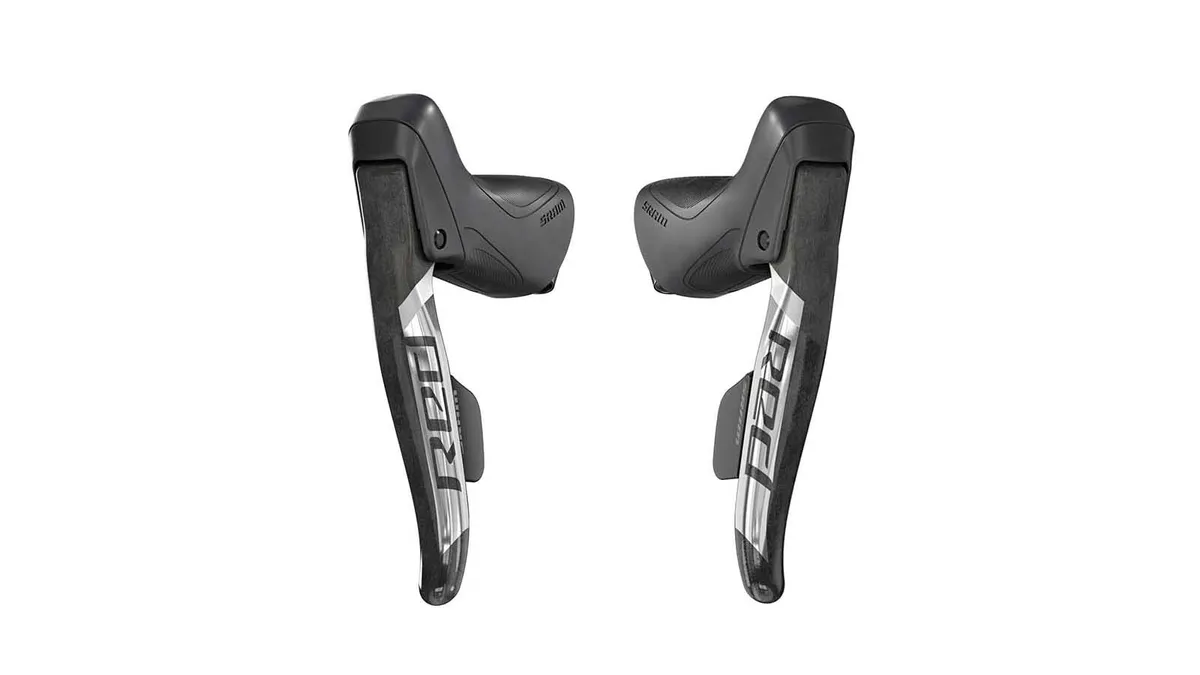
It’s smart stuff, and once you’ve assigned your system to one of these automations you can switch it either on or off while riding by pressing the small LED button on the back of the shifter lever.
Lever shape is largely unchanged from the original eTap. The shift buttons get a bit of texture and hood covers are softer and patterned for better grip.
Losing teeth with SRAM XDR
To increase the rear cassette’s range it needed to have a 10-tooth bottom sprocket. As traditional freehub bodies are too big to allow anything smaller than an 11, SRAM chose to use a variation on the aforementioned XD Driver it pioneered on its 1x mountain bikes (and which has already been seen on 1x groups on road, cyclocross and gravel bikes).
This design, XDR, is close to XD (and compatible with the use of a small spacer). It’s already an option on all of Zipp’s wheels and as most wheel brands already offer an XD option we can’t see much of an issue with compatibility.
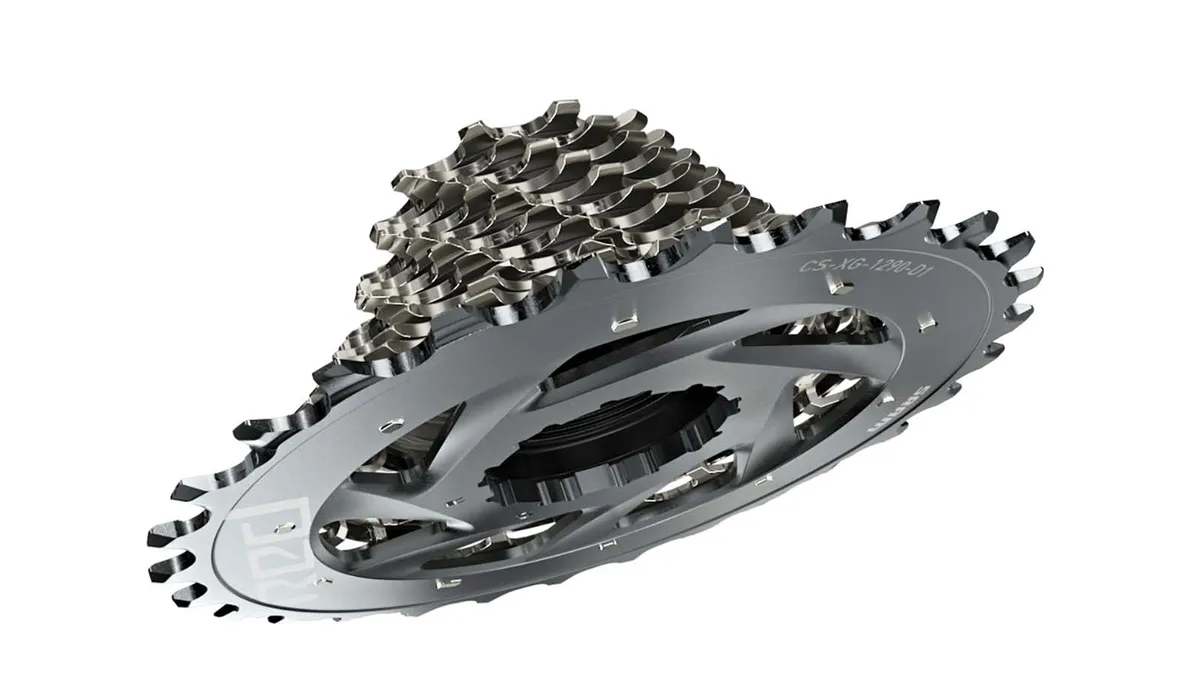
The cassette is a masterpiece of machining, with the construction using SRAM’s one-piece X-Dome design to save plenty of weight.
The first ten sprockets are machined together, as are the largest two. These are then pinned together to create the 12-speed block.
At 181g for a 10-28 it’s light; by comparison, the existing 11-28 is 185g and a Dura-Ace 11-28 is 193g.
The new brake rotors are the first SRAM has produced that are dedicated to the road, previously adopting designs from its extensive mountain bike line-up.
The Durable Unifying bottom bracket (DUB) is SRAM’s answer to creaky press-fit bottom brackets. As the name suggests it isn’t a new standard but something that works across the myriad press-fit standards and traditional designs (BB30, PF30, BBright, PF30a, 386, PF86.5, GXP and BSA).
SRAM’s 12-speed RED eTap AXS HRD ride impressions

After three years riding the original eTap in its various rim and disc brake guises I’ve been very impressed. With AXS I expected some improvement and a wider range of gears, but I wasn’t totally convinced about how essential it would be. It’s only when all of the improvements come together that it all starts to make sense.
The less pronounced jumps between gears make the best use of your efforts and create a more controlled cadence, as the seven 1-tooth jumps are between the gears you will use the most is better than anything currently available (bar a custom time-trial straight through cassette) and that’s the Holy Grail for smoother pedaling.
The shift speed feels very close to existing eTap, but the real plus is just how quietly it carries out those shifts. The combination on the new tooth patterning and increase in clearance means that shifts across the rear block are sharper than before and impeccably smooth and quiet.
Front shifts are more positive and completely accurate, even when shifting over broken surfaces as the rear mech’s damper increases the chain tension and prevents any chatter and bounce.
After experimenting with both automation settings, I was impressed with the sequential operation, where you can forget about front mech operations and just let the bike take care of it. It’s pretty neat.
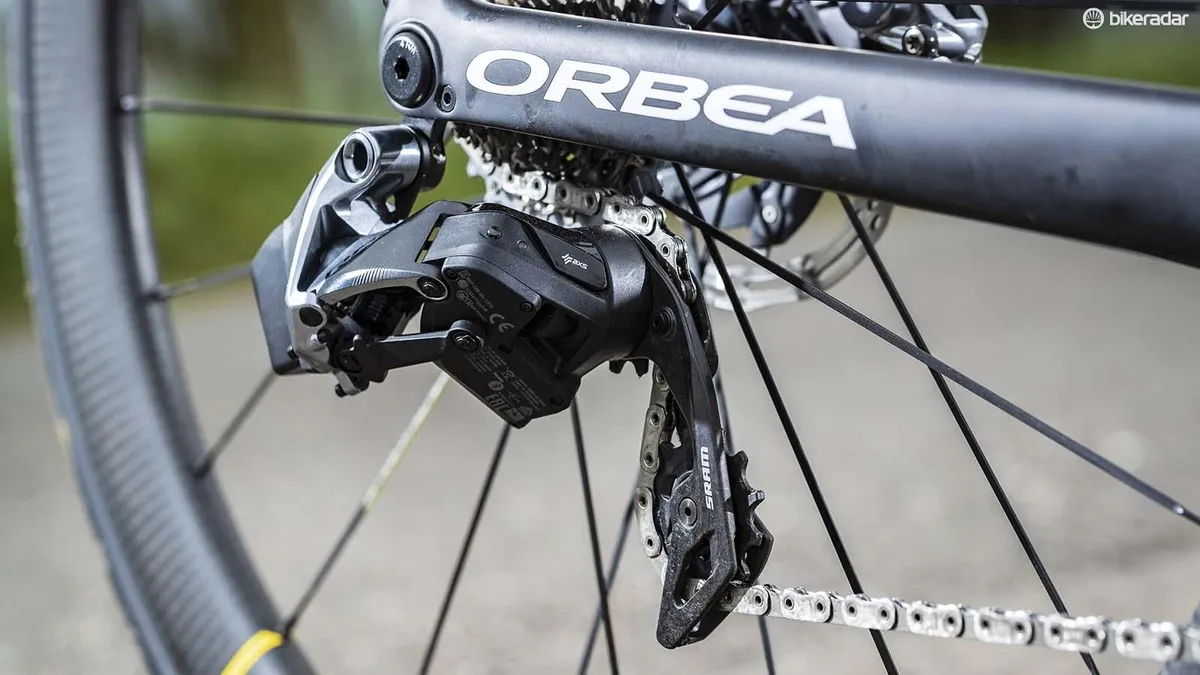
You can choose to shift at the front should you want to, like when you’re coasting up to traffic stops. By far my favourite, however, is the compensation shifting.
When you shift the front ring in either direction the rear mech puts you in the ideal gear progression by moving either one or two sprockets at the back.
Basically, when you change gear at either the front or the back, the auto shift moves the other derailleur if necessary to ensure you are always shifting to the next available gear (in either direction) to keep changes as smooth as possible.
The optional power meter by Quarq is solid and the numbers it’s providing match those I get from the Quarq meter I run on my own bike.

It’s based on Quarq’s top of the range D-Zero unit and offers plenty of metrics, including left-right balance. The levers haven’t really changed in shape, but the finish looks impressive with carbon levers finished with chrome graphics and a new softer and textured grip that feels good and offers a solid connection even in heavy rain wearing winter gloves.
The levers offer two ports per side for SRAM’s accessory blips, which allow you to change gear anywhere you like on the handlebars.
The Orbea Orca, which I’ve been running AXS on, is equipped with two blips mounted under the tape on the underside of the bars’ top, so you can shift gears when riding holding the tops while on a long, steady climb.
SRAM’s 12-speed RED eTap AXS overall impressions
After a few months of testing, eTap AXS has surpassed my expectations. The action is smoother, quieter and arguably quicker than the first generation, and its adaptability, in that you can run it 2x, 1x, or combine it with any of the new AXS mountain bike gearing launching soon, is impressive, making this an electronic groupset you could run on the road, gravel, 'cross, mountain and downhill.
Yes, I might have to learn a whole new set of gear ratios, but it opens up so much potential for experimenting with gear ranges
Always a strong suit of SRAM, the braking is better than ever, looking and feeling like something dedicated for the road and not something cobbled from a mountain bike parts bin.
I guess the big question is this: would I change my existing eTap RED 22-speed for this new model? Honestly I would not, because the existing system is still so good.
That said, when it comes to replacing my current bike or investing in another road machine then, without a shadow of a doubt, I would be wanting the radical new eTap AXS. Especially because coming our way in the near future is a more affordable rival to compete with Shimano Ultegra Di2.

Rim brake fans aren’t being left out in the cold either as SRAM will be offering eTap AXS in that format.
Yes, I might have to learn a whole new set of gear ratios, but it opens up so much potential for experimenting with gear ranges — a road 1x setup with a 10-51 rear block is a real option for those mad enough to try!
The sheer quality of the operation is magnificent and the addition of an app adds the last piece of the puzzle to the user-friendliness of eTap (both old and new).
The move to 12-speed could have been just another trinket to get people to part with their hard-earned cash, but what SRAM has achieved with eTap and its fresh approach to modern bike drivetrains could well be the shape of things to come.
You can only applaud SRAM for having the courage to take on decades of accepted standards and come up with something that’s not just new, but has purpose with it.
SRAM RED eTap AXS bike pricing and availability
Array Arraytable { }tr { }col { }br { }td { padding-top: 1px; padding-right: 1px; padding-left: 1px; color: black; font-size: 12pt; font-weight: 400; font-style: normal; text-decoration: none; font-family: Calibri, sans-serif; vertical-align: bottom; border: medium none; white-space: nowrap; }.xl63 { text-align: left; vertical-align: middle; white-space: normal; }.xl64 { text-align: left; }.xl65 { text-align: left; vertical-align: middle; white-space: normal; }.xl66 { text-align: left; vertical-align: middle; white-space: normal; }
SRAM’s RED eTap AXS will also be available on a whole host of 2019 bikes with brands such as Specialized, Trek, Canyon, Orbea, BMC, Giant, Liv, Scott, Cannondale, Cervelo, 3T, Open, Rose, Parlee and Koga all confirmed.
We were lucky enough to get our hands on Orbea’s Orca a few months ago in the new eTap AXS spec and it’s this bike I’ve used for my testing. Expect a full test of this new Orca soon, but I’ll just say it’s a bike that’s every bit as impressive as the gearing its running.
SRAM RED eTap AXS weights and measures
SRAM claims a 2.518kg complete weight for the group (and add 36g for the power meter)
- DUB bottom bracket (PF30): 88g
- RED 175mm chainset with 48/35 and power meter: 572g
- RED 10-28 cassette: 181g
- RED rear mech: 303g
- RED front mech: 170g
- RED chain 114 links: 249g
- RED hydro levers (pair): 736g
- RED HRD brakes (pair): 480g
- RED centreline X-Road centre lock rotors 160mm: 62g
Orbea Orca M11iLTD-D specification
- Weight: 7.38kg (57cm)
- Frame: Carbon
- Fork: Carbon
- Gears: SRAM RED eTap AXS (48/35, 10-28)
- Brakes: SRAM RED hydraulic disc
- Wheels: Mavic Cosmic carbon UST disc
- Finishing kit: Mavic Yksion Pro UST 25c, FSA OS99 stem, FSA K-Force carbon bar. FSA K-Force carbon seatpost, Selle Italia SLR CarboKeramic, 2 x SRAM Blip remote shifters, Zipp alumina cages x 2, SRAM out front Garmin mount
- £7,649
Jargon buster
SRAM RED eTap
Launched in 2015, RED eTap was SRAM’s first foray into electronic groupsets. While it was some way behind its major competitors Shimano and Campagnolo, who’d had electronic systems for years, it jumped ahead of both by becoming the first to dispense with cables and operate wirelessly.
Sprocket
Sprockets make up the cassette on your rear wheel, which is attached to the freehub and held in place by a lockring. In the case of eTap XRS, the sprockets make up two blocks pinned together to produce the whole, but on many designs sprockets can be individual, particularly as they get smaller.
Clutch mech
A rear derailleur with an uprated spring or friction bushing acting on the jockey wheel cage. This increases the tension in the lower segment of chain and stops it falling off the chainring. SRAM clutch mechs are fixed tension, while Shimano ones have an on/off switch and user-adjustable tension. Such is the design of eTap AXS, the clutch isn’t needed.
Gear ratio
This refers to the number of times the back wheel rotates for each full turn of the pedals. For example, in the eTap AXS, the largest ring on what is effectively the double chainset has 50-teeth and the smallest sprocket is 10-teeth, which means the ratio is 5:1and the wheel will turn five times for every pedal revolution.


